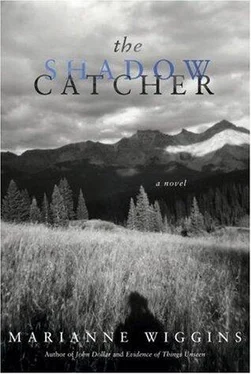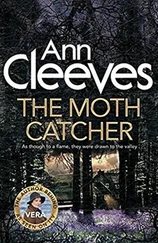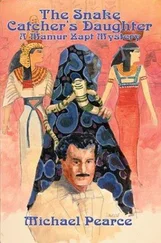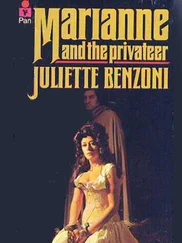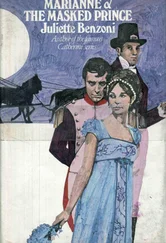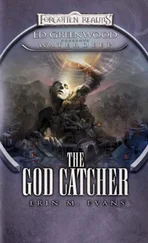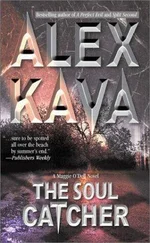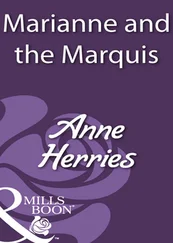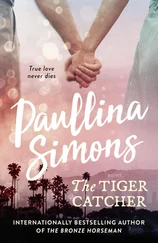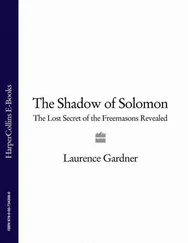And now: I’m very very late.
Lunch will start in twenty minutes whether I’m there or not, and there’s nothing I can do about it, except to try to wait it out to the next exit and get off the highway onto ordinary (I hope) less congested surface streets.
One of the draws of living in the West is the lure of these dramatic landscapes, the pull of these wide-open spaces evoking narratives of ancient geologic time, narratives of passage, disappearance, death; persistence. Up to my right on the Mulholland ridge above Tarzana, there’s a scenic overview where you can park your car and sit on a bench and look out across the whole San Fernando Valley. Seven miles wide, at its widest, and twenty miles long, the valley’s like an island surrounded not by water, but by mountains, and I like to sit up on the Mulholland ridge and imagine what it looked like five hundred years ago before the Spanish came. I put my thumb up the way actors playing painters do, to crop the foreground, blot out the bank buildings at Sepulveda, the rides at Universal, the black glass Blue Cross/Blue Shield headquarters in Canoga Park, and I try to imagine what this place looked like before the horse. Before the train. Before the car. That’s the game The West invites, the game everybody plays out West: pretending we can see the past, here, in the present. Pretending we can call down the impossible, invalidate the present, and convince ourselves we’re in another time, another century. The West — true West — attaches to you like a shadow. I don’t think this happens in the East — I don’t think the landscape summons an imagined past the way the land does here. I don’t think people in Manhattan, Boston or Atlanta turn a corner, see an eighteenth-century graveyard and make an easy leap into imagining the past. In European cities, yes, you can come around a corner and intersect another century, stand in a limestone sanctuary and imagine you are seeing light through stained glass the way it looked six hundred years ago, but in the west, at the cities’ edges, there is the very real encroachment of the older Eden, the original one, the land in its unaltered state. You can see it from the windows of your car without leaving L.A. County. Drive out to Red Rock Canyon or the Vasquez Rocks or take a hike up Mt. Calabasas and you’re in the wild, in another time, entirely. There are places, here, in the valley, where you can go, where there’s not a building or another person within sight. Unlike the crowded basin beyond the mountains to my right, there are streets here that expire into dust beside an old adobe, but everywhere you’ll go within the confines of this valley, you will feel its thirst. The mountains block the cool marine air from the coast and pose a permanent rain shadow. Streams form in winter, but they rapidly evaporate in spring and by summer they are rock-strewn baked arroyos. Two stubborn narrow ones join in Canoga Park behind the high school football stands and it is there, in a concrete crib, that the Los Angeles River shapes its unlikely identity. It’s nothing, really — in any other town east of the Rockies it would be a joke, the kind of miserable low velocity ditch into which any city with a decent river would toss junk. Real L.A. is on the other side of the mountains to my right, and just like the L.A. River I need to find a way through their walls if I’m going to get to Bel Air at all, but because the faults tend north/northeast along the present coast, the coastal ranges follow that direction, slicing L.A. County’s loaf into individually prepackaged servings. If you’re on the 101 heading east — or not heading, as I am — and you want to get off the freeway and take surface streets from the valley side of the Santa Monicas over the hills to the other side, to the basinette of the real L.A., you can’t just zigzag, you can’t just improvise, you have to follow the geology, you have to take either the canyons or the passes, and, from west to east, you have only these six choices:
Take Topanga Canyon.
Take Sepulveda Pass.
Take Beverly Glen, Coldwater or Laurel Canyon.
Or take Cahuenga Pass.
I take Beverly Glen, which means first I have to take the Winnetka exit to Ventura Boulevard which takes an added fifteen minutes because a Dodge Dart with a half-a-dozen 12-step decals plastered on it overheats on the exit ramp, its slogans asking What Would Jesus Do? which is not the existential exercise I need right now because, let’s face it, ain’t Jesus running late, Himself? What would Jesus take is what I want to know, and having called the Hotel Bel Air once already from the 101 to say I’ll be slightly delayed, I now call again to say I’ll be there in ten minutes but when I get to Beverly Glen I have to downshift into first behind a long slow line of similarly-minded-short-cut-takers and I inch uphill behind a Saturn with a vanity plate that reads UP4PART. And maybe it’s because at this point I’m already forty minutes late, maybe because at this point I’ve blown the possibility of salvaging this meeting at the Hotel Bel Air, that I entertain the very real possibility of DOING SOMETHING CRAZY, doing something crazier than sitting in traffic for two hours for the ridiculous proposition of AUDITIONING, because that’s what this meeting is: another Up 4 Part. Another loony desperate writer coondoggin’ the shiny penny, and maybe it’s because in my standard transmission vintage model PT Cruiser I can either go uphill or I can turn the AC on, but never both at the same time , which means I’ve been breathing fossil fuel exhaust for the better part of ninety minutes with the windows down and the sunroof gaping, or maybe it’s because there’s just something about THE WEST, the CALL OF THE WILD and the prospect of ANOTHER ARTIST screwing up, that suddenly I want less to know what Jesus would do than what would Dr. Gonzo do? The question What would Hunter S. Thompson do? presents itself as a reasonable fallback strategy as I take the turn into Stone Canyon at 40 mph, leave the keys with some kind of valet posing as a mariachi guy and rush (what’s this ? a footbridge ? are those swans ?) through the full faux Alhambra of foliage into the faux provençal dining nook toward the table, breathless, rumpled and apologetic, with my hair all EINSTEINED, giving off its own exhaust, mascara/lipstick smeared and bargain Nordstrom Rack linen/rayon MADE IN INDONESIA jacket rutched across my tits to encounter THEM: two women in Armani, militantly trim and toned.
ME: So so sorry, I’m so late.
They smile and show their pearly whites. JON, my agent, signals I have lipstick on my teeth. STACEY, the producer for the star, has brought along MICHELLE, a young assistant They have finished eating their chopped greens. A WAITER comes to take my order and to take their plates away. I notice my manuscript lying between them, faceup. I can read the title upside down. THE SHADOW CATCHER. From her briefcase Stacey extracts a phonebook-thick paperback feathered with yellow Post-it notes. I know it well, this book, it’s the Taschen paperback edition of Edward S. Curtis’s COLLECTED WORKS.
“—what can I say?” she says. “EDWARD S. CURTIS. What passion! What personal courage!” She layers her palms on top of the book, as a NUN would, on a BREVIARY, and breathes, “There’s a movie in here!”
And she wants to turn it loose, I can tell, like an exorcist on call. That would be a great idea for a movie is only ever meant to be a compliment. Not only here in Tinseltown but all across America. It was like a movie always means something happened, you saw something happen right in front of you in an emotionally charged larger-than-life context. It was like a movie can only ever mean that you’re a camera. It can only ever mean that while you’re looking at what’s happening in front of you, you’ve also managed to step back from the experience, you’ve willed yourself into the position of spectator, you’ve willed yourself to be detached in the observance of performance. But There’s a movie in here means the stuff is still a little messy, too messy to be construed as entertainment. Too messy to offer up a possibility for profit, for a lesson or a parable. It’s not art. It’s life. And if you were Cartier-Bresson you’d move yourself into position, you’d align yourself along the arc of possibility and wait for a decisive moment when life, itself, composes into art. Or, if you’re Edward Curtis, you dress the mess to play the part. You disguise the truth to make the image that you want. You find the movie in there at any cost.
Читать дальше
